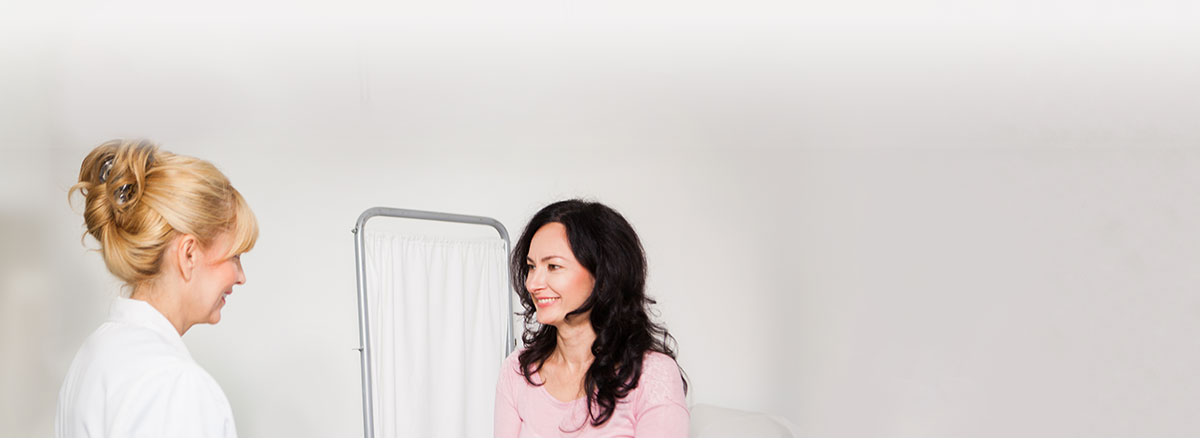Breast Care & Awareness
Breast problems are the most common health concerns among women and can affect women at any age.
In women, the development of breasts usually begins around puberty and they may undergo various changes throughout the life cycle, especially during menstrual periods, pregnancy, lactation and advancing age.
Other than the normal physiological changes, the breast may also undergo a few other changes that may be a cause of anxiety among women.
Why Be Breast Aware?
It has been proven that breast examinations are essential for early detection of breast cancer and are also useful for breast cancer prevention.
Women over 40 years of age are predisposed to breast cancer. Increased breast awareness is a very effective tool for early detection and prevention of breast cancer.
Types of Breast Changes
The common pathological breast changes can be categorized into non-cancerous and cancerous changes.
Non-cancerous changes include
- Breast lumpiness;
- Painless, movable and firm lumps;
- Presence of cysts;
- Breast pain;
- Abscesses or nipple discharge.
Cancerous changes in the breast include
- Invasive ductal carcinoma and
- Lobular carcinoma.
Symptoms of Breast Cancer
The symptoms of breast cancer include a
- Persistent irregularity or lump within the breast or near the underarm,
- Swelling around the breast,
- Changes in the appearance of the breast or nipple,
- Nipple discharge which may be blood-stained or clear fluid,
- Hardness or dimpling felt over the breast
- Any unusual changes in the breast.
Breast Checks
The most popular methods of breast checks involve
- Breast self-exam (BSE),
- Clinical breast exam (CBE), and
- Advanced breast imaging
Other diagnostic measures such as
- Ultrasound and
- Magnetic Resonance Imaging (MRI) can also be used.
These methods are commonly used for diagnostic purposes, for early detection of breast cancer.
Breast Self-Examination
In breast self-examination, a woman checks her own breasts to identify any abnormalities or unusual changes.
Women should perform a monthly self-exam of their breasts. Any lumps or other abnormalities noted in the breasts should immediately be reported to the doctor.
Being 'breast aware' and to self-examine regularly so that any changes can be detected early.
It is also important to report symptoms such as nipple rash and bloody discharge to your GP as these may require further investigation.
It includes observation and physical examinations of the breast. Breast self-examination is easy, free, and can be performed easily at home.
Always inform your doctor about any change:
- The appearance of your breasts, or
- Any related abnormality.
Breasts may swell and become tender at different stages of your menstrual cycle, so plan the breast self-examination at a convenient time every month to avoid discomfort.
Clinical Breast Examination
This method of breast check is performed by a doctor such as your GP to identify any unusual changes in the breast or the presence of any lumps.
It involves a careful physical examination of the breast that helps in detecting any abnormality and to devise an appropriate treatment plan.
Diagnostic Breast Testing
Diagnostic Breast testing can include:
Breast Ultrasound
This diagnostic procedure is often used to confirm the examination findings, as well as to evaluate any abnormalities detected during a breast self-examination, clinical examination or on mammography.
Mammogram
Mammograms are one of the most effective diagnostic tools for identifying breast cancer. They detect the changes in the underlying soft tissue and assess the depth and cause of the pathological condition.
The benefits of the mammogram include early detection of breast changes through high-quality images which provide a clear picture of the involved tissue and help detect all types of lumps.
Regular mammogram screenings, in women over 40 years of age, significantly reduce the mortality from breast cancer.
Depending on their risk factors for breast cancer, women over the age of 40 may need to have a mammogram performed every one to two years.
3D Breast Mammography or Tomosynthesis
3D Breast Mammography or 3D Breast Tomosynthesis is a new type of procedure. It is an X-ray procedure similar to a mammogram, but unlike a mammogram, which captures a 2D or flat image of the breast, a tomosynthesis can be used to produce a 3D image
There are several benefits to 3D breast tomosynthesis:
- The procedure is more comfortable than a mammogram
- Test results are more accurate as the breast tissue is not compressed reducing the likelihood of tumours going undetected
- The 3D images produced are more detailed
Breast MRI
A breast MRI (magnetic resonance imaging) is a diagnostic test used to detect breast cancer or other breast abnormalities. Multiple images of the breasts are produced and may be combined to create detailed images.
MRI is one of the most sensitive diagnostic techniques for detecting breast cancer, but sometimes MRI can see “too much” leading to unnecessary biopsies Breast MRI is not needed for everyone, but your specialist will decide whether it is warranted.
Breast Biopsy
A breast biopsy is a procedure in which a small sample of breast tissue containing suspicious breast growth is removed and examined in the laboratory for the presence of cancer.
It is indicated when abnormal findings are seen during mammography, ultrasound or MRI scans, or unusual changes are noticed in the nipple (dimpling skin, scaling or bloody discharge) or breast tissue (thickening or lumps).
Contrast-Enhanced Mammography (CEM)
Contrast-enhanced digital mammography is a quick breast imaging technique which combines 3D Tomosynthesis digital mammography with an intravenous contrast agent to identify malignancies.









